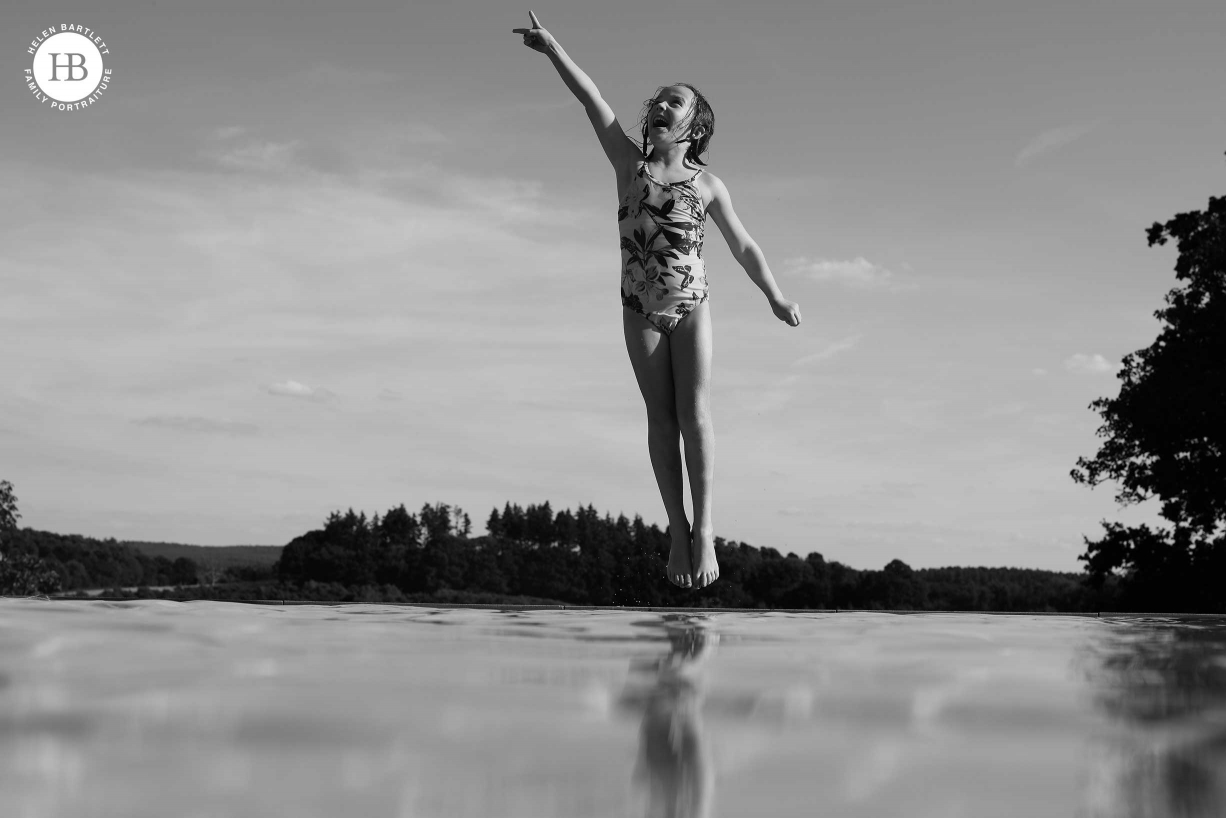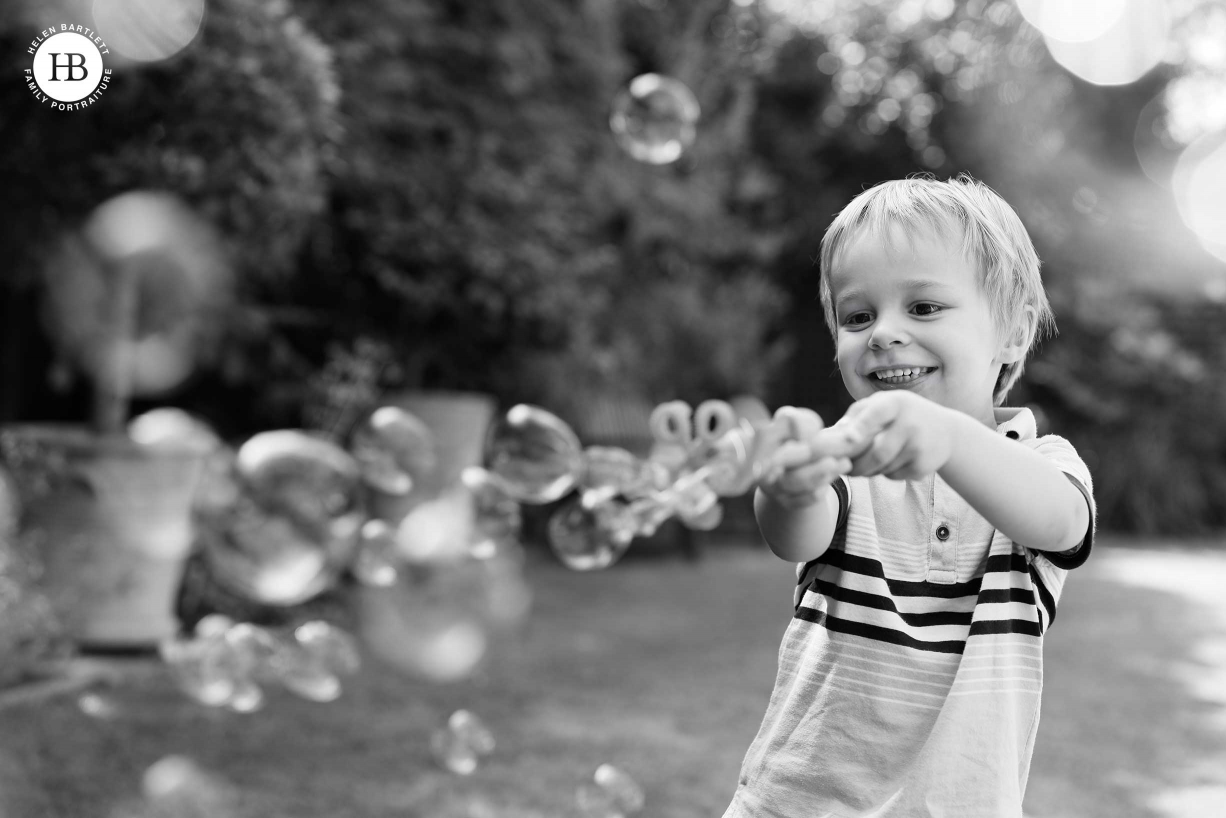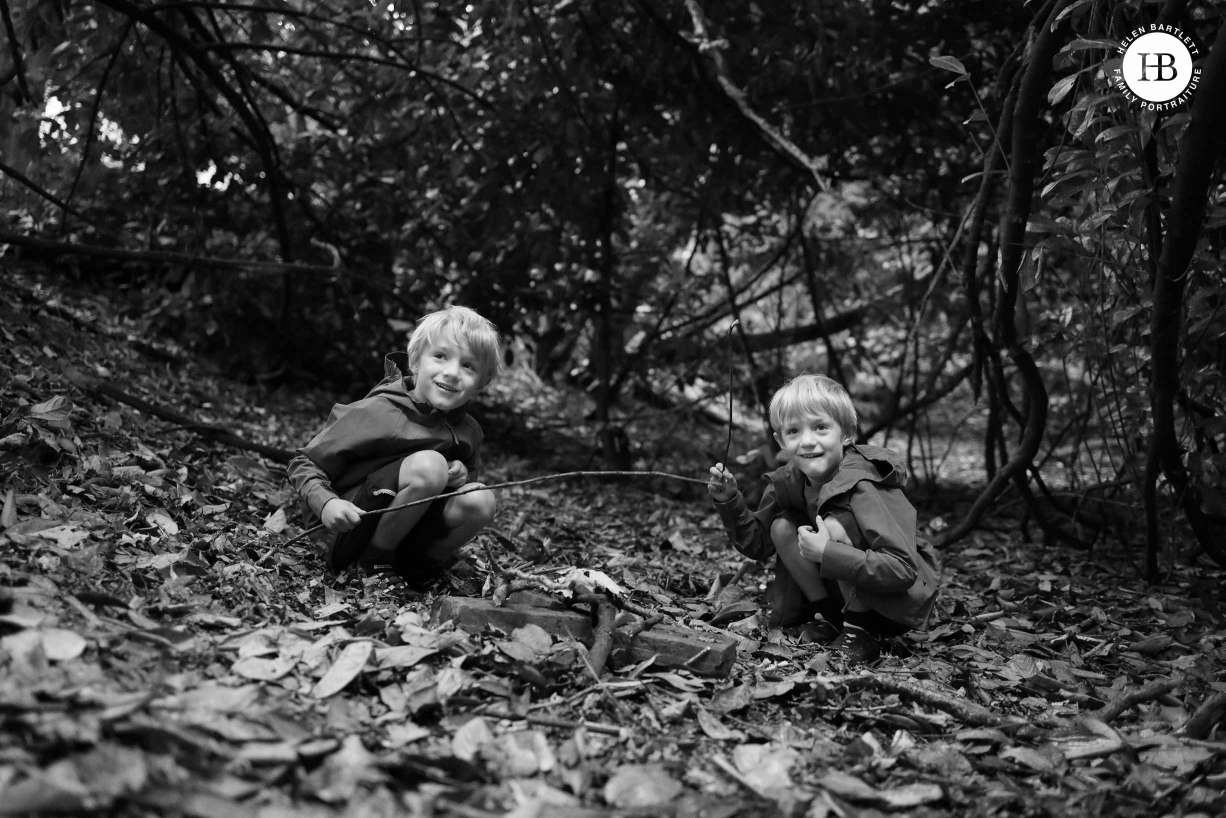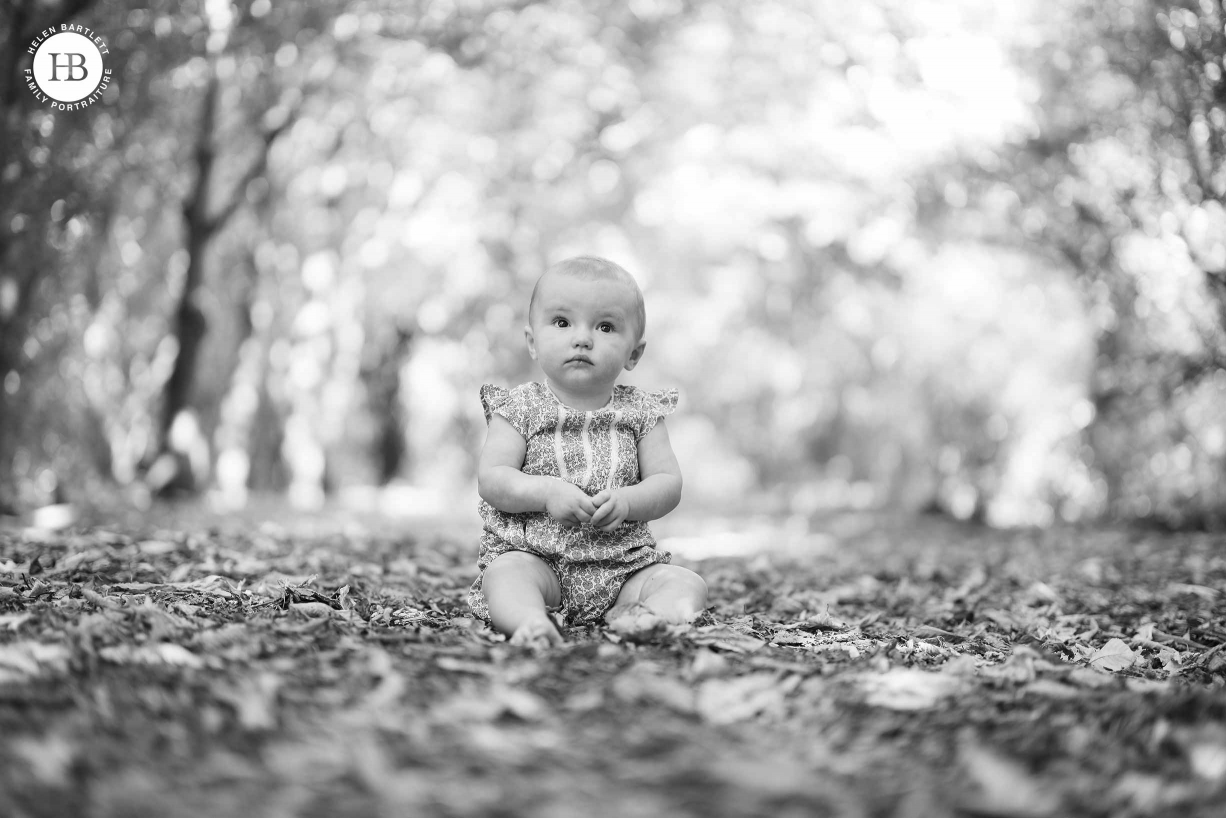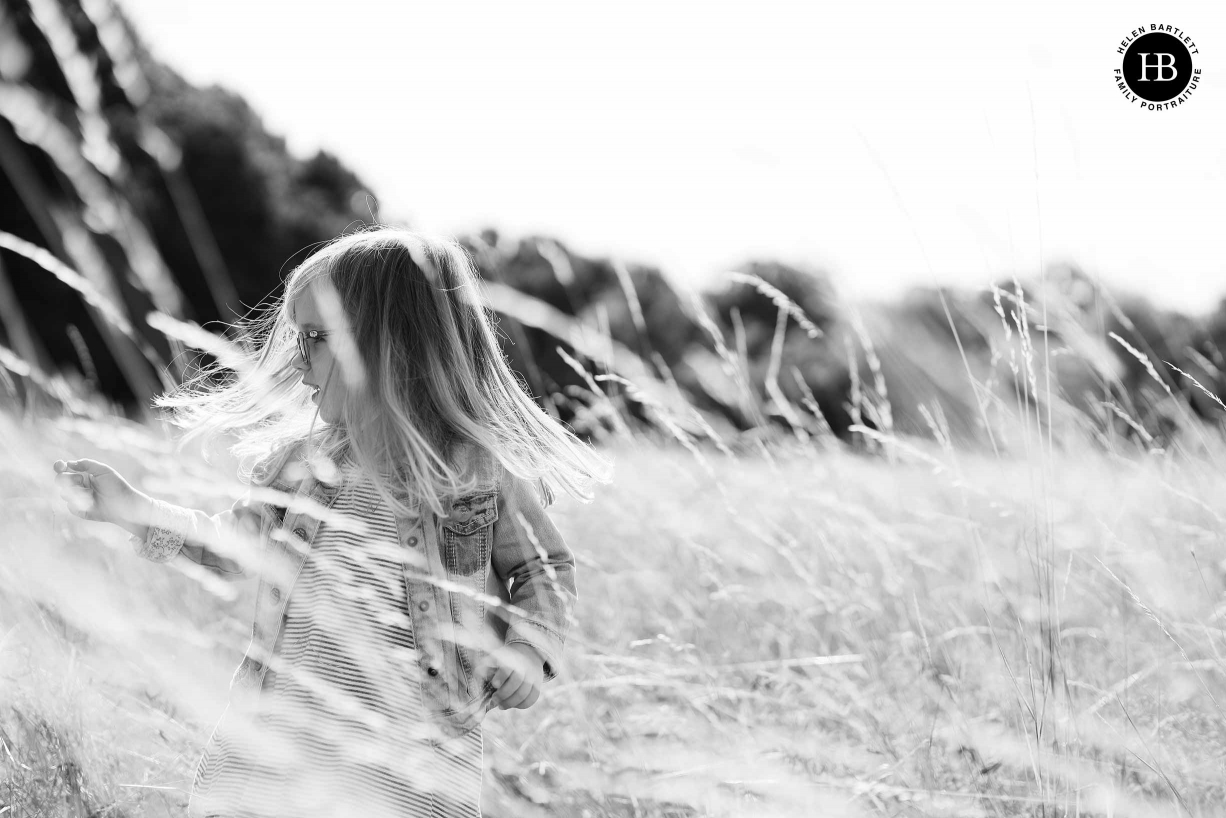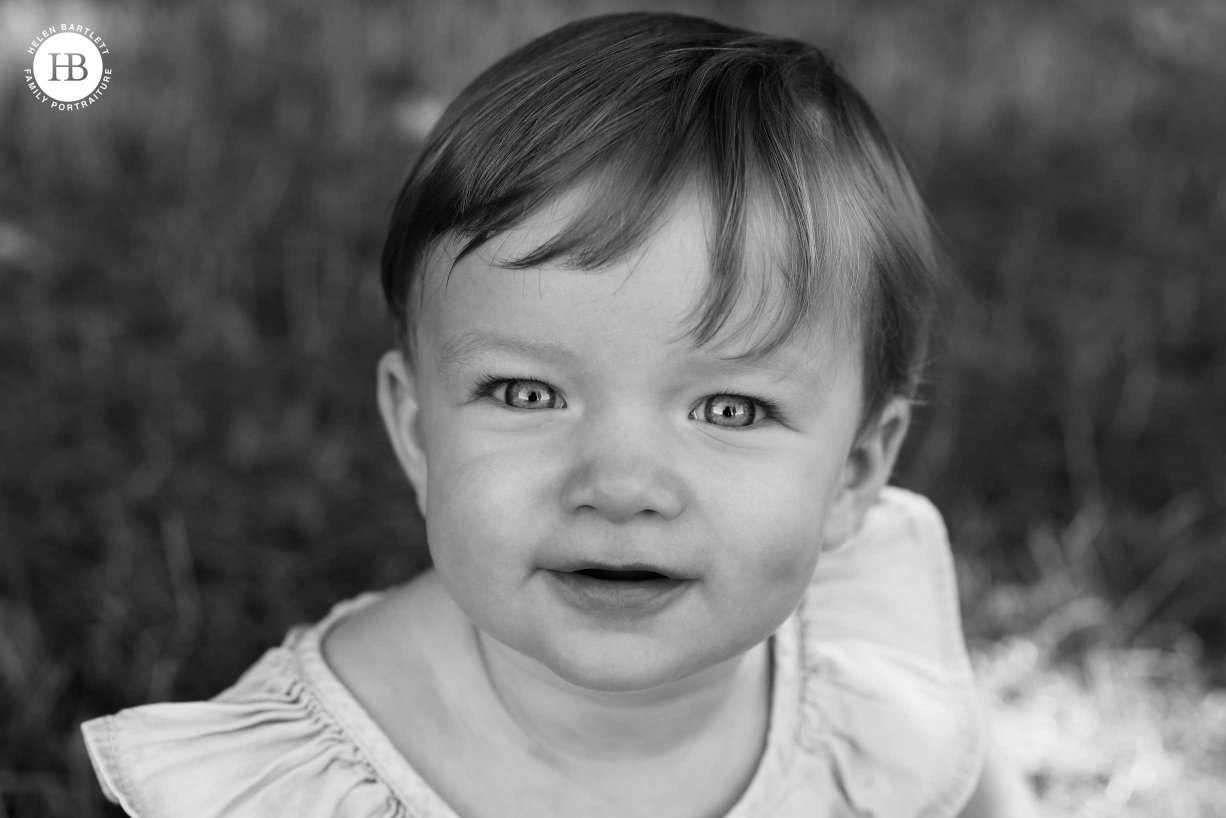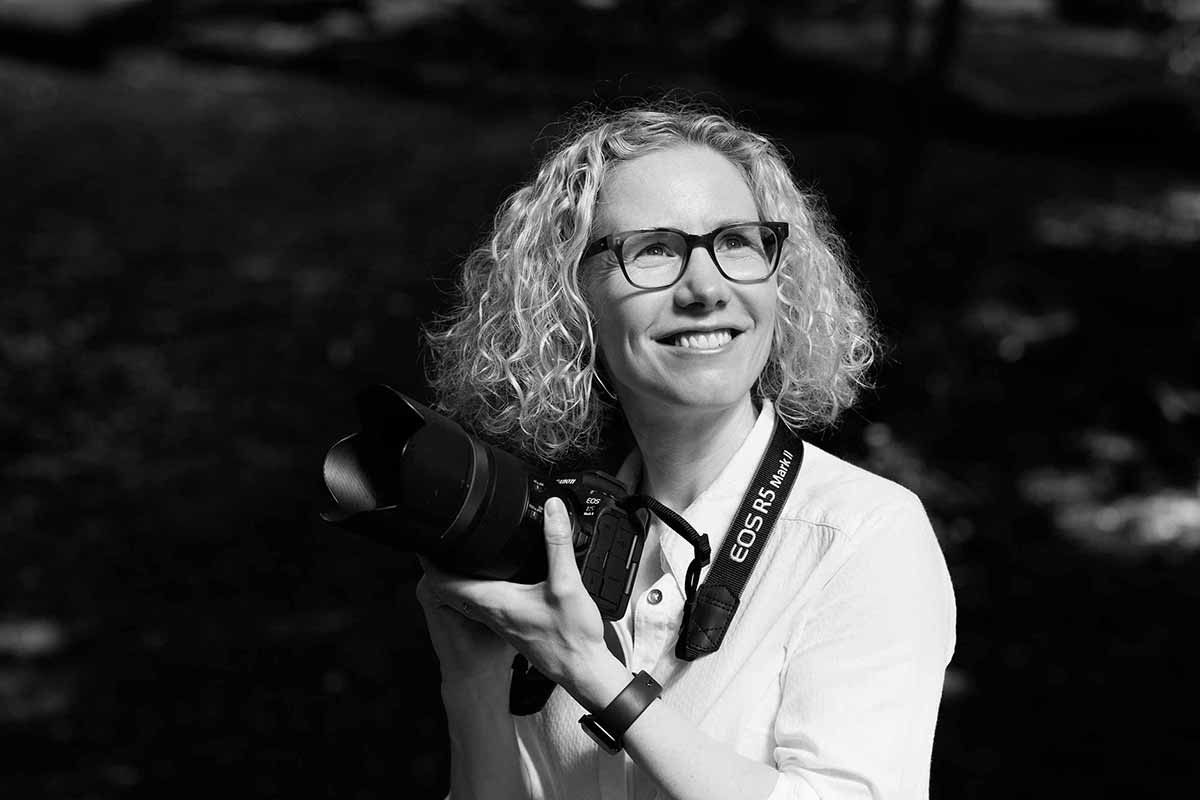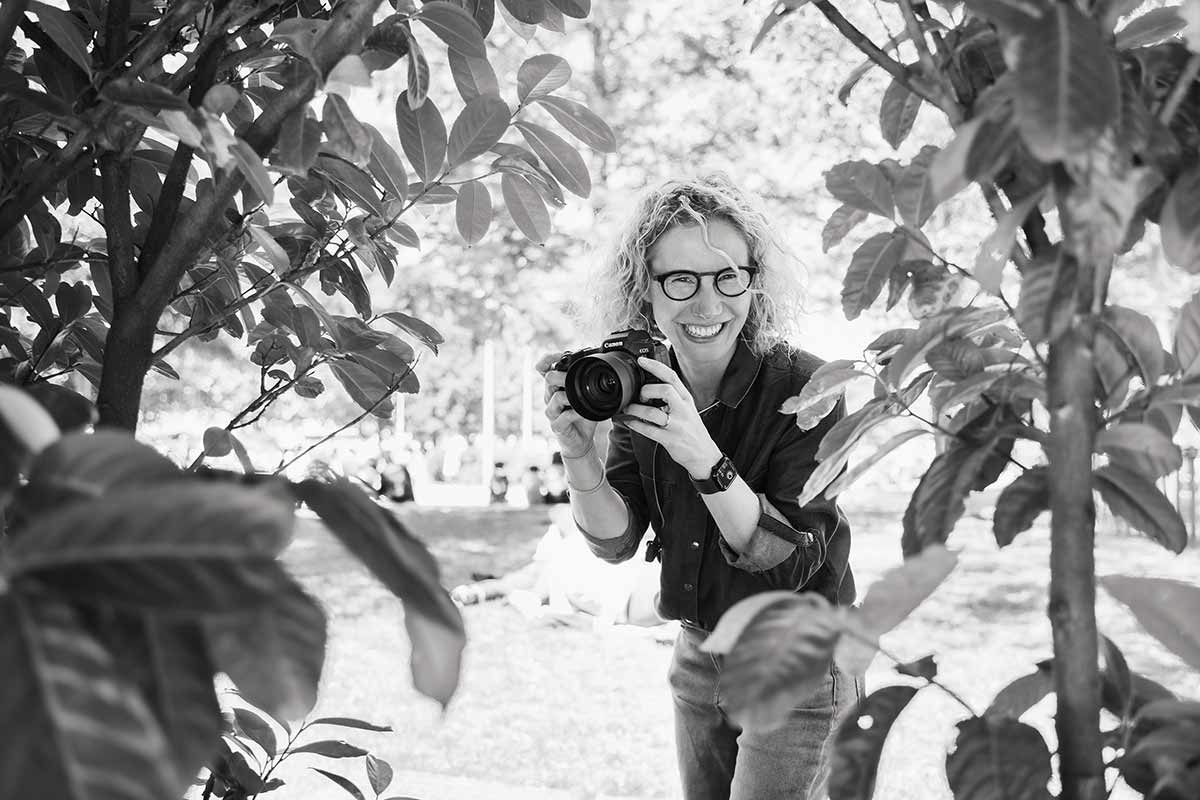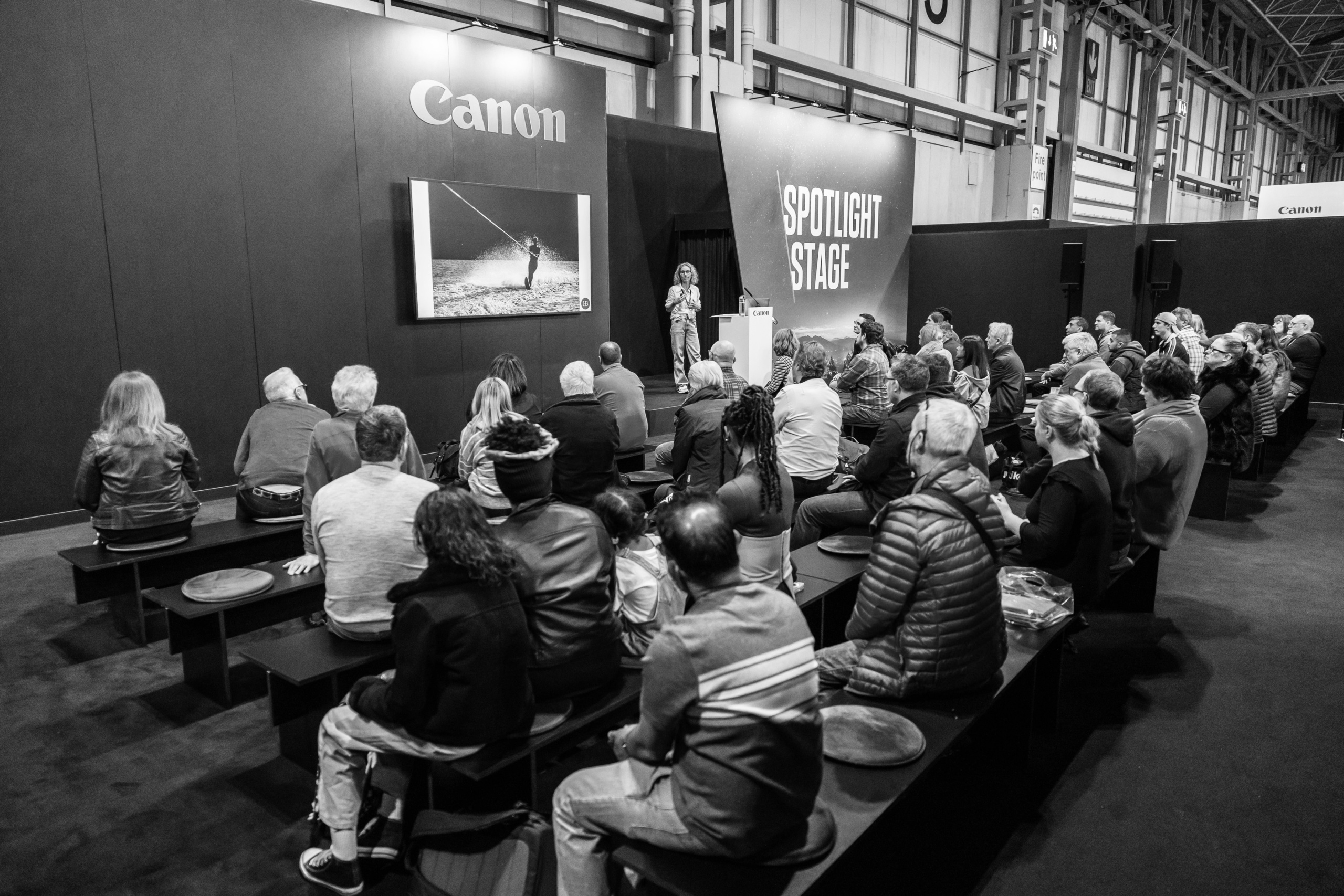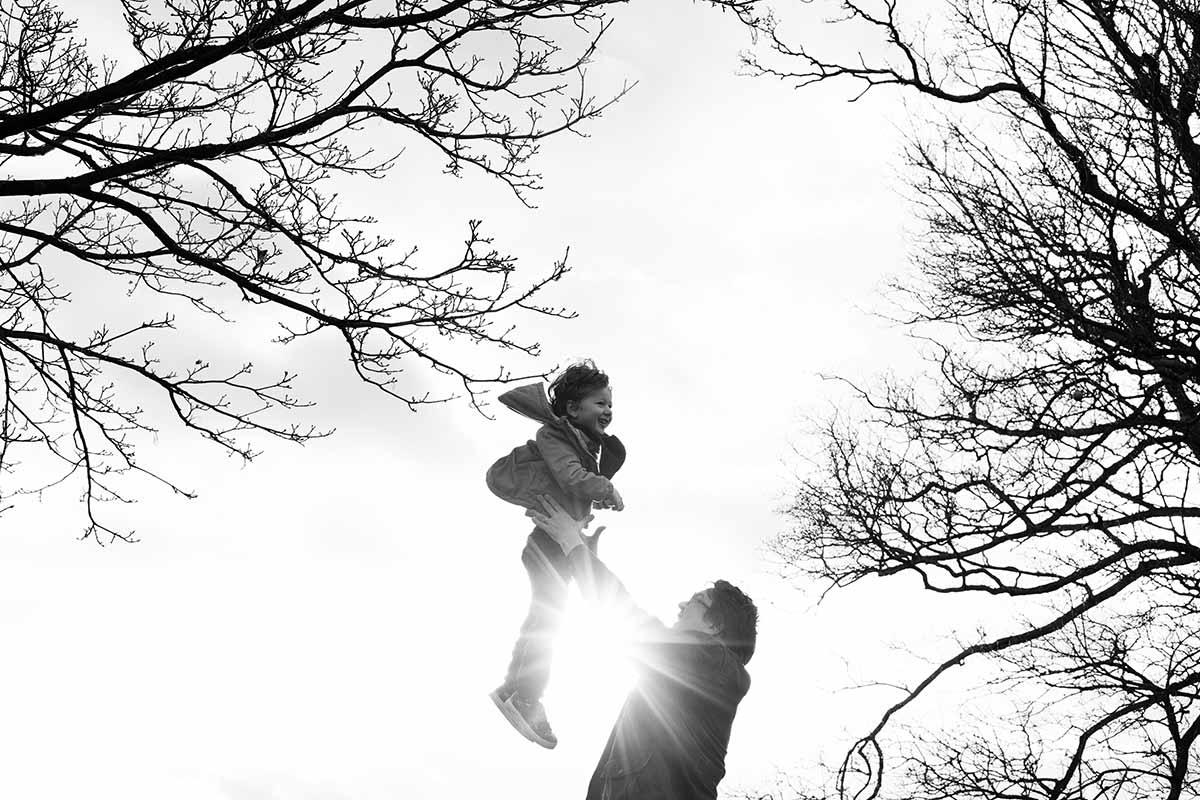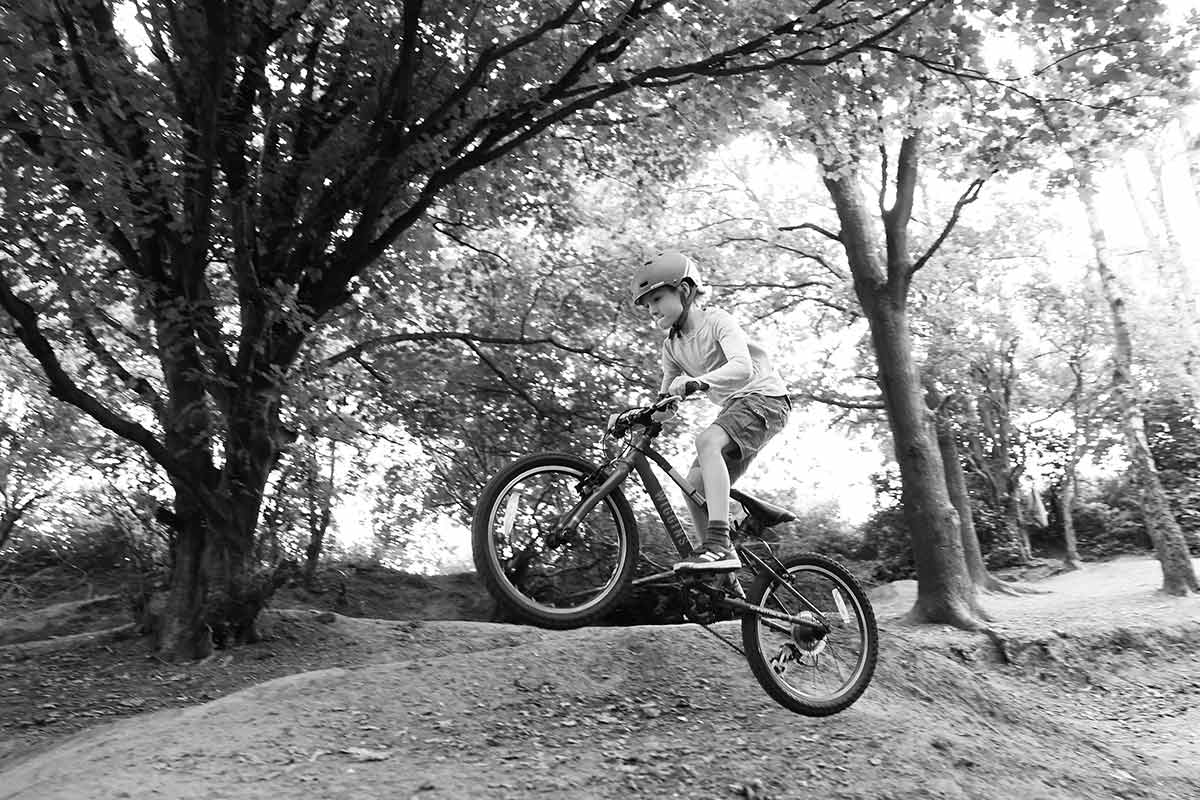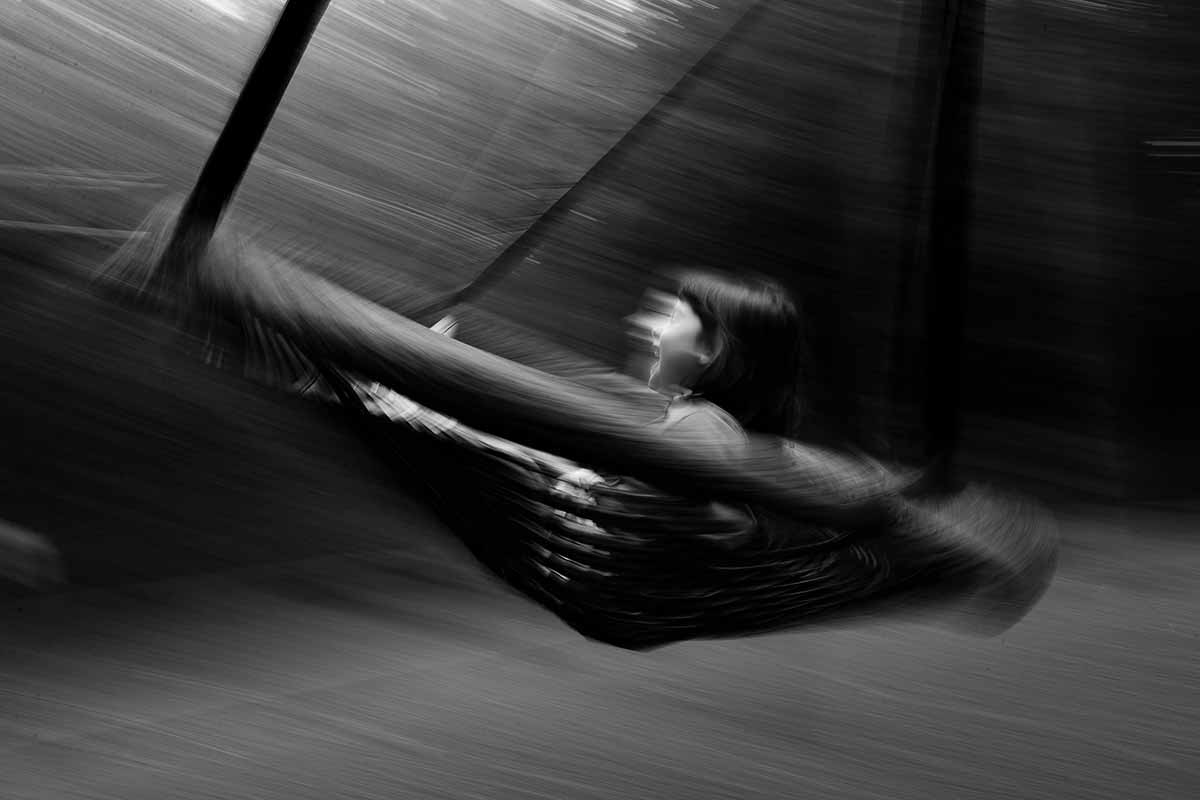Canon EOS R – First Impressions
My thoughts on the Canon EOS R, based on several shoots
Today, Canon launched its first full-frame mirrorless camera, the Canon EOS R. I’ve been lucky enough to use the camera over the summer because, as a Canon ambassador, I was commissioned to shoot some pictures for the launch. I’m not a very techy person so this isn’t a review. Instead, I wanted to share some of my first impressions of this lovely new piece of kit and how I found it worked in real world scenarios.
For those who haven’t visited my blog before, let me give you a bit of background. I’m a family photographer specialising in natural, black and white photographs of children and families. I take my pictures on location in my clients’ homes, gardens, and at their local parks, everyday situations that many of you will recognise from photographing your own friends and families.
I’ve been a Canon user my entire professional life and my usual kit is two Canon EOS 1DX Mark II cameras and Canon EF 85 f/1.4L IS USM, Canon EF 35 f/1.4L II USM, and Canon EF 50 f/1.2L USM lenses.
All images in this blog post were shot with pre-production hardware and firmware.
What’s New on the Canon EOS R
So, first things first, what’s it like, this camera that we’ve all been waiting for?
It’s a smaller camera body than a standard professional-level DSLR and it’s light, weighing about 600g. It feels solid in the hands and is well-built (I tested it in the pouring rain and can confirm it’s got good weather sealing). Personally, I added the battery grip as I like its ergonomics, but for those who are concerned about weight the small body will be perfect. It has a 35mm full-frame CMOS sensor with 30.3 megapixels and the latest DIGIC 8 image processor. The image quality is as beautiful as you would expect from Canon and there is 4K video (although I didn’t try the video features because I’m very much a stills photographer). It uses LP-E6N batteries like the 5D series cameras, so you might already have spare batteries that you can use with it.
The EOS R is going to be priced somewhere between the Canon 6D Mark II and the 5D Mark IV, making it a camera that will appeal to both professional photographers and serious amateurs alike. It’s not being marketed as a replacement for the 1DX Mark II that I use, it’s a very different beast with a frame rate of 8fps continuous shooting with fixed AF, or 5fps with AF tracking. I should say now though, I will definitely be buying one to shoot with alongside my current kit as it has so many new features which will improve the pictures I can take for my clients.
The new EOS R’s new lens mount means that Canon have been able to create lenses that weren’t possible before, and there is also an adaptor, so we can use existing EF lenses. This will really help when integrating the new camera into my current workflow because I can use my full range of lenses as well the four new RF mount lenses that have been announced so far: the RF 50mm f1.2L USM, RF 24-105mm f4L IS USM, RF 28-70mm f/2L USM, the RF 35mm f1.8 MACRO IS STM.
Like most of the mirrorless cameras on the market, the EOS R has totally silent shooting which is fantastic for wedding and street photography and – for me – really helpful when photographing newborns where I often find myself creeping about trying not to wake the little ones. It will also be hugely helpful at events or any moments where I want to totally blend into the background, such as if there is a particularly shy child who is very camera-aware.
Customisable features on the Canon EOS R
The EOS R includes some cool new customisable features. One of these is the new control ring on the RF lenses (and on the Canon control mount ring adapter EF-EOS R, if you want to use your existing EF lenses). This ring can be used to control aperture, shutter speed, or exposure compensation. I found it easiest to use it for ISO, keeping my shutter and aperture controls on the top dials where they felt most natural to me. Most of the other buttons on the camera are customisable via the settings menu, and having this flexibility to customise controls means that more things can be changed without moving the camera from my face and so lessening the chances of missing a moment.
Another brilliant new feature is the multi-function bar on the back above the rear screen. This is another fully customisable element and puts more controls at your fingertips. It can be set to a slide or touch motion depending on personal preference (I had it set to slide). I set mine up to change the style of focus point as I’m always jumping from spot focus to area focus and everything in between when photographing children where one minute I might be shooting a serious individual portrait and the next a pack of children jump on the bed.
Touch Screen Focus
The biggest difference for me though was the use of the touch screen to control focus. I admit I was wary of this because I’m a huge fan of the joystick on my Canon EOS 1DX Mark II cameras and I move my focus point around almost continually as I’m shooting. At first, I freaked out a little when I couldn’t reach the screen with my right thumb, it felt slow and cumbersome to me. And then, I got it. I was shown how to customise the screen so I could use my left hand to control the focus point and there are different options for using different areas of the screen so depending on the size of your hands and how your fingers fall when holding a camera you can find the perfect system for you. This, the element I found most difficult to get my head around, was the thing that in the end I fell most in love with – there are 5,655 selectable AF positions with touch and drag, that’s incredible to me. Heading out for shoots in recent weeks since I’ve returned the Canon EOS R, I have found myself a little frustrated with the constraints of using the joystick on my Canon EOS 1DX Mark II.
The touch screen is also vari-angle giving flexibility for new compositions that would have been difficult before and will, I am sure, be useful for taking selfies!
Electronic Viewfinder
What else did I love? The new electronic viewfinder. It’s bright, it’s sharp, and it’s ‘what you see is what you get’, which I found an absolute joy to use. My work is always in black and white, so I shoot in the EOS R’s monochrome mode. With the electronic viewfinder this means the image I see through the camera is in black and white as well. That means that I’m able to concentrate on light and shade, tone and texture, and see exactly how the finished image will look.
I think anyone who has been watching the way photography has been evolving in recent years will have seen the difference that electronic viewfinders have made to many photographers’ work. There’s been a new confidence in shooting with difficult lighting, exposing for the highlights and bringing a darker, more contrasty look into the mainstream, particularly using rim lighting and back lighting. While, of course, all this can be achieved with a DSLR, and I already love to experiment with contrasty lighting, there’s no denying that an electronic viewfinder makes this so much easier.
I think this is a tool that will improve the photography of many people who use this camera, especially if they are moving from a DSLR system. For newer photographers, it will make the process of learning photography faster and easier as the results of each change of setting will be immediately evident. This will be of great benefit to both individuals and the industry as a whole as we all move our photography forward. Even after a week, I definitely felt it made a positive difference to my work.
The electronic viewfinder also gives access to some great tools such as focus peaking which I found to be hugely useful. In situations where either the light was almost impossible or where my eyesight struggled (note to self: clean my glasses more often), having the ability to use focus peaking was invaluable. For those of you who haven’t come across this before, focus peaking allows you to set a colour (e.g. red) that will outline all the areas in focus in an image before you press the shutter so you can manually focus knowing what the result will be. I can see this becoming a go-to setting for macro photographs of newborns where precision is paramount.
Autofocus
So, autofocus. What’s it like on the EOS R? It’s good, it’s really good. Photographing children running around is always such a good test and I was very impressed indeed. On the EOS 1DX Mark II, I use a lot of the focus optimisation settings that are pre-programmed for different scenarios: ‘erratic subject moving in every direction’ always sums up children to me. The EOS R doesn’t have these modes pre-programmed but because it’s so customisable you can set up the C1, C2 and C3 settings to act like your favourites.
I ended up setting up one of the custom settings for panning as that’s something I do a lot, a single press of a button putting me at ISO 100 f11 and 1/40 second, my preferred starting point from which I like to tweak depending on what exactly is going on.
Having custom settings for different scenarios saves so much time when out on a shoot and, when I get my own EOS R, I’ll definitely spend some time really getting to know these options and making sure I have the most useful ones set up. I imagine another good use of these custom settings might be for wedding photographers to program one to their standard ‘walking out of the church when the light will change dramatically and there will suddenly be a lot going on’ setting – perhaps going from manual for the bride and groom walking up the aisle to aperture priority and auto ISO as they exit the church to ensure that not a moment is missed, and then shifting back to manual when things have calmed down.
Face detection works really well and uses 90% of the image area which is great when kids move around. You can also use your thumb on the touchscreen to move your focus point as the subject moves which becomes second nature really fast. Unlike many systems, you can use the touch screen to move the AF point while the camera is up to your eye and truly, it took a couple of hours, and then it felt like second nature to use the new system moving focus points from corner to corner or from top to bottom at the swipe of a thumb. It’s an innovation that I’m really excited to use again.
The EOS R’s autofocus is great even in low light and challenging backlit situations and, once I got used to it, worked well with complex backlit woodland shots which is always a challenge as there’s such a lot of contrast in the background.
High ISO on the EOS R
As any of us who regularly photographs small children knows, they do like to keep us on our toes so when one of the games became ’Let’s build a den, draw the curtains, and switch out all the lights’ I used that as a challenge. I can report that ISO 10,000 is really good even when it’s two children huddled under a blanket lit only by a phone screen. I regularly shoot at ISO 6,400 and above when photographing families as light levels can be an issue (particularly in the winter!) and I need to know that I can happily print my images at least 24” across as I print a lot of double page spreads in albums. I know I’ll be confident to continue to work at such high ISOs using the EOS R.
In technical terms the camera focuses to -6 EV, or in layman’s terms it can focus when I can’t really see.
RF 35mm f1.8 MACRO IS STM
The other really exciting things are, of course, the new lenses. As those of you who know me will be aware, I’m a prime lens fan and so the RF 35mm f1.8 MACRO IS STM and the RF 50 f/1.2L USM were the lenses I was keen to try out on my shoots.
Let’s look at the RF 35 f1.8 MACRO IS STM first. This is a lovely little lens, small and light and one of those lenses that you could keep on the camera day and night and be happy. It’s in my shopping basket for sure and will be my primary lens for holidays, days out, and other situations where I want to travel light. Having a 35mm lens with a macro option is fantastic for photographing babies as macro shots can be so beautiful. I tested it on a baby’s lovely long eyelashes during one of my test shoots and it didn’t disappoint. I used autofocus with the macro setting but I could see that switching to manual and using focus peaking would work brilliantly too. I didn’t do a newborn shoot with the EOS R but as soon as I have a camera of my own then the 35mm lens will be my new macro lens of choice for those shoots. I think the wider field of view will improve my macro work, especially when combined with the electronic viewfinder to work with more challenging light. It’s exciting to think that new equipment will bring changes and improvements to my pictures and I’m excited to see how the other innovations will add new dimensions to my family photography work.
35mm is a fabulous focal length for family photography – it’s my storytelling lens and I could easily shoot a whole session on my current one, so I imagine I will definitely do full shoots on the new one. I feel this was a great choice by Canon for their launch line up of lenses.
RF 50mm f/1.2L
The big news for me though was the RF 50mm f/1.2L. My EF 50 f/1.2L is one of my current favourite lenses and it’s a focal length that I find very intuitive – Henri Cartier-Bresson was onto something using the 50mm for most of his photography. When I got this new lens out of the box I was struck by its dimensions but as soon as I started to shoot any thoughts of size immediately disappeared, it’s simply a staggeringly sharp lens, probably the best I have ever shot with.
I’ve always loved shooting wide open on fast lenses but with fast-moving children I’m aware that it can be a bit hit and miss, even with the best will (and the fastest autofocus!) in the world. I can honestly say that the RF 50mm f/1.2L caught more shots absolutely spot on wide open with moving subjects than anything I have used previously and the bokeh is out of this world. This and the 35mm are the two lenses I’ll be getting as soon as the camera hits the shops.
RF 28-70mm f/2L USM
I tried the RF 28-70mm f/2L USM lens, although I only had it on one shoot because I’m very much a prime lens user. It’s a big lens, but an f/2 zoom is something really special and I would definitely urge trying it if you are a fan of zooms. The image quality is everything you would expect from Canon.
Adaptors
For my existing lens collection – which is large and varied – there is an adaptor so I can use them on the EOS R. Excitingly though, you can get an adaptor with a control ring on, so the customisable lens ring I mentioned earlier (ISO for me, but aperture, shutter speed, exposure compensation, the choice is yours) is available with your current lenses. There is also an option for an adaptor where you can drop in neutral density and polarizing filters. It’s the flexibility that Canon gives us that make me so excited by the new system.
In Conclusion
So, do I think the Canon EOS R was worth the wait? Emphatically yes. It’s a brilliant camera that I’ll be adding to my kitbag soon.
I’ll still be using my EOS 1DX Mark II bodies because they are so well suited to the way that I work, but I’ll be adding an EOS R because there are situations where it’s a better tool for me than the DSLRs. When my 1DX’s need replacing in a few years, I expect I will be looking to replace them with Canon full-frame mirrorless cameras because this new system feels like the future. In the meantime, I’ll be getting an EOS R, an RF 35mm f1/8 MACRO IS STM, and an RF 50mm f1.2L USM. I imagine I will use it more and more as time goes by.
I love the handling of the new system and the touchscreen for choosing the focus points. I adore the customisable features, the touchpad, and the lens ring and I absolutely love the electronic viewfinder. The image quality is superb and the low light capabilities are fantastic. Most importantly though, it’s a really great camera to shoot with. I felt my work improve in the week I had it and that, more than anything, has sold me on the new system. If you are looking to get a new camera or thinking of taking advantage of the features that mirrorless systems offer then take a look at the new EOS R: you won’t be disappointed.
Technical information for the images
Image 1 (girl jumping into swimming pool): Canon EOS R, Canon RF 50mm f1.2L USM. f5.6, 1/1250, ISO 200
Image 2 (baby imitating Andrex Puppy): Canon EOS R, Canon RF 35mm f/1.8 MACRO IS STM. fF2, 1/500, ISO 1000
Image 3 (boy with bow and arrow): Canon EOS R, Canon RF 35mm f/1.8 MACRO IS STM. f2, 1/160, ISO 2000
Image 4 (boy with bubbles): Canon EOS R, Canon RF 50mm f/1.2L USM. f2.5, 1/400, ISO 200
Image 5 (mum playing with baby): Canon EOS R, Canon RF 35mm f/1.8 MACRO IS STM. f1.8, 1/1000, ISO 1600
Image 6 (boy on sofa): Canon EOS R, Canon RF 50mm f1.2L USM. f1.2, 1/8000, ISO 1600
Image 7 (girls reading by torchlight): Canon EOS R, Canon RF 50mm f1.2L USM. f1.2, 1/60, ISO 400
Image 8 (mum and son running): Canon EOS R, Canon RF 50mm f1.2L USM. f13, 1/15, ISO 100
Image 9 (mum and son cuddling): Canon EOS R, Canon RF 28-70mm f2L USM. f3.2, 1/160, ISO 1600
Image 10 (boys in the wood): Canon EOS R, Canon RF 35mm f/1.8 MACRO IS STM. f2.8, 1/200, ISO 10,000 (pouring rain)
Image 11 (detail of eyelashes): Canon EOS R, Canon RF 35mm f/1.8 MACRO IS STM. f2.8, 1/160, ISO 200
Image 12 (baby in woodland): Canon EOS R, Canon RF 50mm f1.2L USM. f1.2, 1/640, ISO 400
Image 13 (girl in field): Canon EOS R, Canon RF 50mm f1.2L USM. f2, 1/2500, ISO 200
Image 14 (girl doing gymnastics): Canon EOS R, Canon RF 28-70mm f2L USM. f4, 1/400, ISO 3200
Image 15 (boys thinking): Canon RF 35mm f/1.8 MACRO IS STM. f2.5, i/125, ISO 2500
Image 16 (portrait): Canon EOS R, Canon RF 50mm f1.2L USM. f4, 1/400, ISO 500
